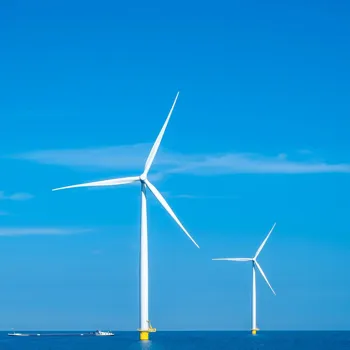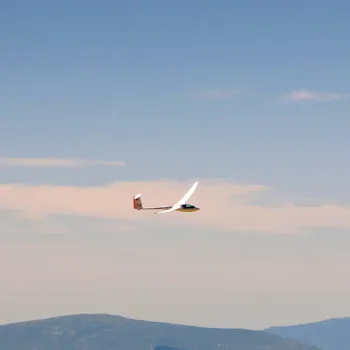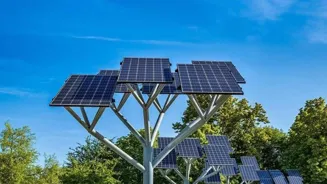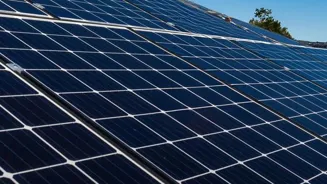Discover 8 Game-Changing Renewable Energy Innovations revolutionizing our planet! From solar supercells to floating wind farms, explore the future of clean energy. Let's dive into the tech shaping a sustainable
world!
The climate change situation is getting serious, yaa. We’re talking about melting glaciers, crazy weather patterns, and the potential for some real problems down the line. Lucky for us, the brilliant minds are on the case with some amazing new renewable energy technologies.
These breakthroughs offer a ray of hope, a chance to power our world cleanly and sustainably. Forget those dusty old images of solar panels and windmills – we're entering a whole new era of green energy!
So, put on your thinking cap, grab a cup of chai, and let's dive into eight innovations that could seriously change the game, saving the planet, one kilowatt-hour at a time!
Perovskite Solar Cells: Solar Power, Supercharged!
Okay, so everyone knows about solar panels. They're on rooftops, in fields, even on calculators! But traditional silicon solar cells have their limits. They can be expensive to produce, and their efficiency – how much sunlight they convert into electricity – isn't as high as we'd like.
Enter perovskite solar cells! These are the new kids on the block, made from a special material called perovskite. What's so great about them? Well, they're much cheaper to manufacture than silicon cells. Think printing press style production, reducing costs like crazy.
More importantly, perovskite solar cells have the potential to be much more efficient. Some lab results have already shown efficiencies beating those of silicon.
Plus, they can be flexible and lightweight, opening up possibilities for using them in all sorts of places – covering buildings, powering vehicles, even integrated into clothing!
It's early days, but perovskite solar cells are looking like a seriously promising alternative to traditional solar tech, and could make solar power even more affordable and accessible for everyone, from big cities to remote villages.
Imagine whole buildings covered in colourful, efficient solar skins! That's the potential. One day, imagine wearing your own phone charging jacket!
Advanced Geothermal Systems (AGS): Tapping Earth’s Hidden Heat
Geothermal energy – using the Earth's internal heat to generate electricity – is a well-established technology. Places like Iceland and New Zealand are already big geothermal power users.

But traditional geothermal plants need specific geological conditions which requires underground reservoirs of hot water or steam which which are limited in location. In India also places like Puga valley in Ladakh offers a lot of geothermal energy potential.
Advanced Geothermal Systems (AGS) change all that. Instead of relying on natural reservoirs, AGS creates its own. It involves drilling deep wells into hot, dry rocks and then fracturing those rocks to create pathways for water to circulate.
This water, heated by the Earth's core, is then brought to the surface to generate electricity. The beauty of AGS is that it can be deployed in many more locations than traditional geothermal, opening up a vast, untapped resource of clean energy.
It’s reliable, always available (unlike solar and wind), and can provide baseload power – a constant, steady supply of electricity. Think of it as tapping into Earth’s secret energy stash, available almost everywhere if you dig deep enough.
This technology is particularly exciting for countries like India, with diverse geological terrains and high energy demands.
Floating Wind Farms: Taking Wind Power Offshore
Wind power is another renewable energy superstar, but land-based wind farms can sometimes face local opposition due to noise and visual impact. Putting wind turbines offshore solves a lot of these problems by using winds that are typically stronger and more consistent than those on land.

The challenge? Building wind turbines in deep water is expensive and technically difficult because of the challenge of drilling deep wells.. That's where floating wind farms come in.
Instead of being fixed to the seabed, these turbines are mounted on floating platforms, which are tethered to the ocean floor. This allows wind farms to be located in much deeper waters, far out to sea, where winds are even stronger and more reliable.
Floating wind farms are still relatively new, but they're rapidly developing. Several pilot projects are already up and running, and the technology is showing great promise.
Imagine vast arrays of wind turbines gently bobbing on the ocean surface, silently and efficiently capturing the power of the wind. It's a vision of clean energy independence. This is a game-changer for countries with long coastlines and abundant offshore wind resources.
Ocean Thermal Energy Conversion (OTEC): Harvesting the Ocean's Warmth
The ocean is not only vast, but it also stores a huge amount of solar energy in the form of heat. Ocean Thermal Energy Conversion (OTEC) is a technology that harnesses this energy. OTEC works by exploiting the temperature difference between warm surface water and cold deep ocean water.
Warm surface water is used to vaporize a working fluid, which then drives a turbine connected to a generator. Cold deep-sea water is then used to condense the working fluid back into a liquid, to be reused.
It sounds complicated, but the basic principle is simple: use the temperature difference to create energy. OTEC is still in its early stages of development, but it has the potential to provide a massive amount of clean energy.
The ocean covers 70% of the Earth's surface, and the temperature difference between surface and deep water is significant in many tropical and subtropical regions.
Imagine OTEC plants floating on the ocean, providing a continuous supply of clean energy, with the other beneficts to local marine ecosystems. It's a long-term vision, but one worth pursuing.
Hydrogen Fuel Cells: The Hydrogen Revolution
Hydrogen is the most abundant element in the universe, and it can be used as a clean fuel when it is used in fuel cells. A fuel cell combines hydrogen and oxygen to generate electricity, with water as the only byproduct. No pollution, no greenhouse gasses.
Hydrogen fuel cells hold enormous promise for powering vehicles, buildings, and even entire cities. The big challenge is producing hydrogen in a clean and cost-effective way. Most hydrogen today is produced from natural gas, which is not a renewable process..
However, there are several promising methods for producing "green" hydrogen, including electrolysis (using electricity to split water into hydrogen and oxygen) powered by renewable sources.
Imagine a world powered by hydrogen, where cars emit only water vapor, and factories run on clean hydrogen fuel. The hydrogen revolution is underway, and it could fundamentally transform the way we power our world.
Moreover, countries like India can also export their hydrogen-generated fuels to countries who does not have access to it.
Biomass Energy with Carbon Capture and Storage (BECCS): Actually Removing Carbon from the Atmosphere
While all the renewable energy technologies we’ve discussed so far help to reduce carbon emissions, Biomass Energy with Carbon Capture and Storage (BECCS) goes a step further: it can actually remove carbon dioxide from the atmosphere.

BECCS works by burning biomass (organic matter such as wood, crops, or algae) to generate electricity, and then capturing the carbon dioxide emitted during the combustion process. This captured carbon is then transported and stored underground, preventing it from entering the atmosphere.
So, BECCS essentially turns plants into a carbon sink, locking away carbon dioxide that would otherwise contribute to climate change. While it’s not a silver bullet, BECCS could play a significant role in mitigating climate change, especially in combination with other renewable energy technologies.
It’s a way of turning something that would otherwise be a problem (carbon emissions) into a solution (carbon removal). With India being an Agrarian Country, it has the potential to use BECCS to its fullest and can reduce Carbon footprint on its land.
Liquid Air Energy Storage (LAES): Turning Air into Batteries
Storing energy is a huge challenge for the widespread adoption of renewable energy sources like solar and wind. Batteries are one solution, but they can be expensive or not very sustainable.. Liquid Air Energy Storage (LAES) offers a completely different approach.
LAES works by cooling air to extremely low temperatures, turning it into a liquid. This liquid air can then be stored in large tanks. When energy is needed, the liquid air is heated up, turning it back into a gas. This expanding gas drives a turbine, generating electricity.
The beauty of LAES is that it uses readily available materials (air) and is potentially very scalable. It can store energy for long periods of time and at a large scale, making it ideal for grid-scale energy storage.
Imagine giant tanks of liquid air acting as batteries for the grid, smoothing out the peaks and valleys of renewable energy supply. It offers a very interesting solution to the storage problem.
Airborne Wind Energy (AWE): Kites and Drones Generating Power
Forget traditional wind turbines – Airborne Wind Energy (AWE) takes wind power to a whole new level – literally. AWE systems use kites, drones, or other tethered flying devices to access stronger and more consistent winds at higher altitudes.

These flying devices are connected to generators on the ground, which produce electricity as the devices move in the wind. AWE systems offer several advantages over traditional wind turbines. They are more mobile, less visually intrusive, and can access stronger winds at higher altitudes.
They can also be deployed in areas where traditional wind turbines are not feasible. AWE is still in its early stages of development, but it has the potential to revolutionize the wind power industry. The possibilities are huge.
These eight innovations are just a glimpse of the exciting things happening in the renewable energy world. These technologies show that a future powered by clean, sustainable energy is not just a dream – it’s a real possibility.
Each of these technologies are worth exploring as these offer solutions to generate electricity better than existing energy setups. It gives a sense of hope for coming generation.
By investing in research, development, and deployment of these innovative technologies, we can save the planet and build a cleaner, healthier, and more sustainable future for all. So, let’s get cracking, boss!













